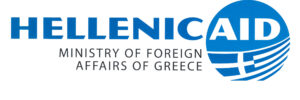This Report is a snapshot of the European Union’s (EU) contribution to aid and development effectiveness and its monitoring thereof. It examines the performance of the EU and its Member States against the results of the 2019 Global Partnership for Effective Development Cooperation (GPEDC) monitoring Report. Almost 1,800 projects in over 70 partner countries were analysed to generate a gauge of the performance of the European Union as a collective whole.
The key principles of development effectiveness are: (i) Country ownership, (ii) Transparency and accountability, (iii) Focus on results, (iv) Inclusive development partnerships. The methodology used comprises is data either presented directly or combined into composite indicators. There are ten high level indicators (many more sub-indicators) covering themes from use of partner country systems through quality of dialogue, involvement of civil society, predictability and transparency of funding and financial management, gender equality and tied aid. The data is publicly available on an interactive website (http://dashboard.effectivecooperation.org/viewer).
At the Sustainable Development Goals (SDGs) level, SDG 17.15.1 is the only indicator used to measure respect for the partner country’s policy leadership and space to establish and implement its own policies for poverty eradication and sustainable development. The GPEDC’s 2019 report found declining performance for development partners as a whole since 2016. EU performance was above average, with a slight increase from 61% to 62%.
In terms of predictability, over the short and medium term future, the EU has dropped although this is likely worsened by the reporting period coming close to the EU Institutions multi-annual financial framework’s expiry date. Some EU Member States improved their predictability but the majority also declined.
On using partner country public financial management systems, there has been a marginal overall decline. The EU has remained steady in terms of using partner country audit and procurement systems whilst also maintaining its performance in terms of getting aid onto partner country budgets. Regarding untying aid, the EU has performed very well: by 2017 92% of all aid is regarded as untied.
On transparency, performance is based on reporting to the OECD Creditor Reporting System, OECD Forward Spending Survey and the International Aid Transparency Initiative (IATI). The EU’s performance has deteriorated in terms of reporting to the two OECD systems while the EU has maintained its score in publication to IATI, still ranking better than the GPEDC average.
More information: https://ec.europa.eu/europeaid/sites/devco/files/eu-development-effectiveness-monitoring-report_en.pdf
